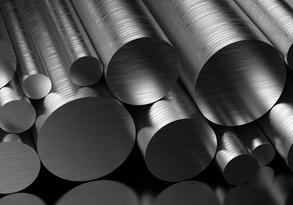
Drawn steel bars have a wide range of applications.
They are essential on construction sites, used for reinforcing concrete, building fence systems, and even in the construction of industrial machinery. Drawn bars are a special type of steel.
The market offers round, square, hexagonal bars, manufactured by rolling, forging, or continuous casting. Additionally, rolled bars, after scale removal, can undergo the drawing process.
Drawn Bars
Bars are an important structural element of a house. That is why they must be strong, corrosion-resistant, and above all, durable. Before purchasing bars, it is worth gathering some information. One should choose bars that are optimal for the specific application.
Drawing is a relatively complex process used in metallurgy. Through drawing, the material increases its length at the expense of its diameter. Importantly, drawing does not alter the internal structure of the material and allows for achieving the desired shape efficiently and economically.
Thanks to drawing, the processed material increases its strength, while its flexibility decreases. This is a very precise method, especially useful when rolling does not yield the expected results.
How does the drawing process work?
The drawing process is a type of machining in which the material is pulled through a die. The die has a smaller diameter than the material being drawn through it. This elongates the material and reduces its diameter. The process enables the production of straight bars with any diameter. Bars produced by drawing have smooth, often shiny surfaces. Drawing can be done hot or cold.
There are many methods of drawing, depending on the type of drawing machine used:
- dry drawing – using solid lubricants
- wet drawing – using liquid lubricants
- straight-line drawing – the wire passes between drums in a straight line
- back pull drawing – the material is pulled from one side while being pushed from the other
- sizing drawing – with minimal cross-section reduction
- non-slip drawing – no slippage between the material and the drum
- slip drawing – slippage occurs between the material and the drum
Physical and mechanical properties of drawn steel bars
Drawn steel bars are characterized by high tensile strength and excellent surface quality. Compared to hot-rolled bars, drawn bars have greater hardness and better plasticity, making them ideal for high-precision applications. Their increased hardness results from cold drawing, which hardens the material.
Drawn bars also show better resistance to corrosion and wear, which is particularly important in applications exposed to weather conditions or chemicals.
Differences between cold-drawn and hot-drawn bars
The main difference between cold-drawn and hot-drawn bars lies in the production process and the resulting mechanical properties. Cold-drawn bars are produced at lower temperatures, allowing for higher dimensional accuracy and better surface quality. Hot-drawn bars, on the other hand, are produced at higher temperatures, making them more plastic but with lower surface quality and dimensional accuracy.
Drawn Bars – Standards and Specifications
The production of drawn steel bars is subject to specific standards and specifications to ensure product quality and safety. Key international standards include EN (European Standard) and ISO (International Organization for Standardization). In Poland, national standards (PN) also apply, defining requirements for chemical composition, mechanical properties, and testing methods for drawn steel bars.
Storage and transport recommendations for drawn steel bars
Drawn steel bars require appropriate storage conditions to avoid corrosion and mechanical damage. They should be stored in dry, well-ventilated areas, away from moisture and chemicals. During transport, proper securing is necessary to protect the surface of the bars.
Various cross-sections
Drawn bars are available in various sizes. One can choose between round, square, or hexagonal cross-sections made of different steel grades.


